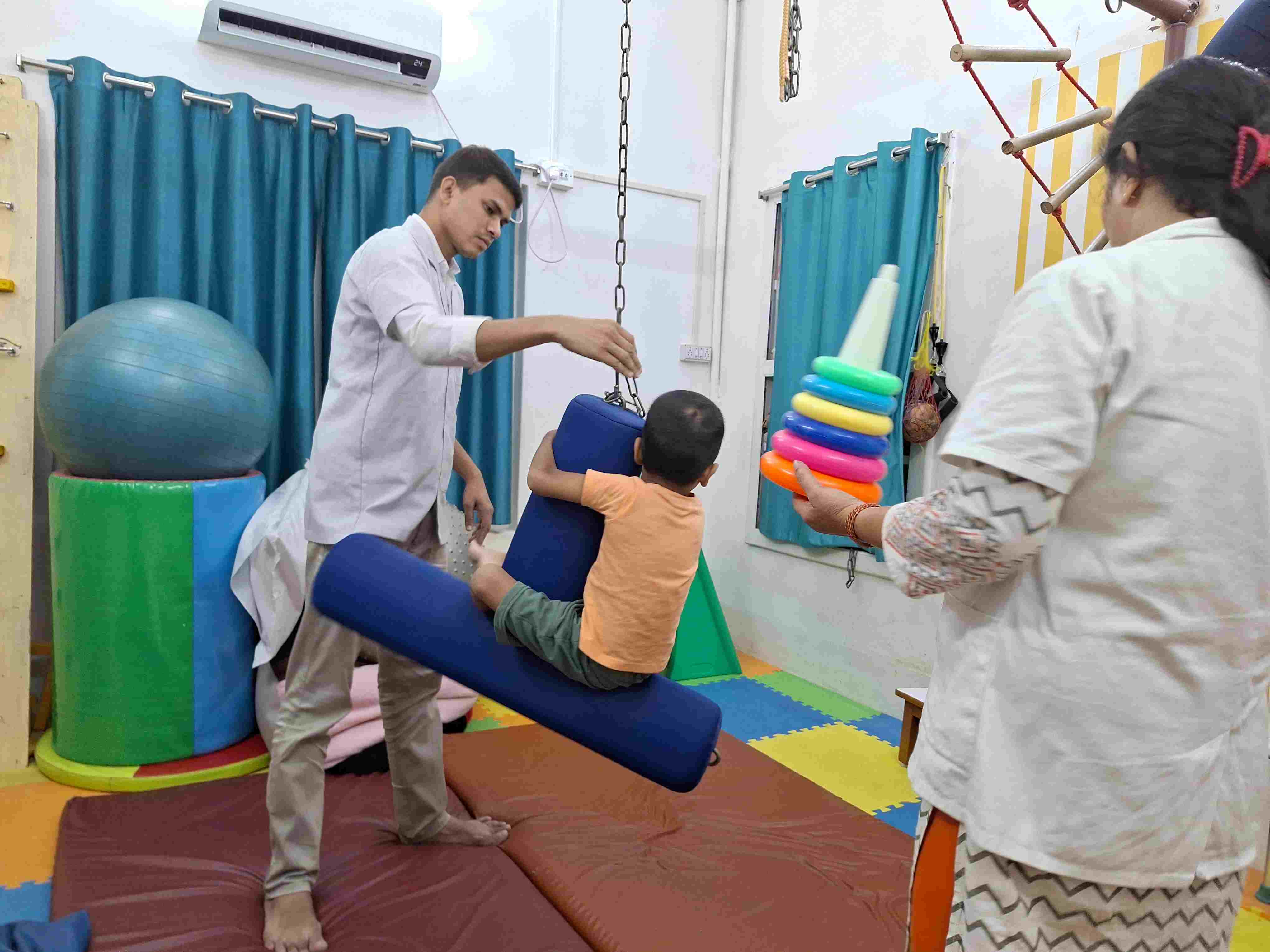Role of Occupational Therapy in Autism
On February 02, 2024

The role of occupational therapy in autism extends across remediation of simple sensitivity issues to complex cognitive and academics ones.
Myths and Facts about Occupational
Therapy: Sensitivity
issues are very minor and subtle area to be addressed by an occupational
therapist. Most commonly, OT gets referral for sensitivity issues only. This is
a great misconception among health professionals that OT is only to resolve
problems arising out of sensitivity in one or another sensory modality such as
tactile or auditory sensitivities. But, reality is that by taking a long course
of occupational therapy a child with autism: Can feel their body and body parts
Can locate himself in the space
Can relate things in the
environment
Can listen and respond to any
given instruction
Can attempt a task confidently
Can understand his surrounding
environment
Ccan learn daily life tasks faster
Can improve postural adjustment
Can participate in outdoor games
more confidently
Reduced anxiety
Reduced impulsivity
Disappearance of fidgeting
behavior
Disappearance of sensitivity
related odd behaviors
Increased level of attention span
Better sitting and waiting
tolerance
Better perceptual fine motor
performance leads to learn functional tasks easily
Coordinated handwriting
Better planning skills
Better performance at reading and
mathematics
Automatic improved vocal ability
Improved socialization and
self-esteem.
Above are few to count only. This
is quite surprising that they either knowingly or unknowingly keep kids with
autism away from the treatment they require most for leading an independent
& productive life. There is a great need to put light on the role of
occupational therapy in autism in little detail to beak the myth.
Concerns
of Parents: Every parent wants the development of
their kids must be on time. It should be age appropriate. A little delay makes
them anxious and alert. Any physical or
mental delay drives them to seek medical help. This is truer if the delay is of
physical in nature. Behavioral delay is generally identified a little late such
as autism. But parents need not worry, rather they need right guidance to start
the right treatment as early as possible.
Professional
Network of Referral System: Since speech delay is a
very noticeable symptom in autism, parents directly go to speech therapist.
some goes to psychiatrist, whereas some goes to psychologist. Ultimately, they
are referred for occupational therapy. Why ultimately because those
professionals can not address the basic problems of child development. They
address behavioral or cognitive aspects mainly which does not help a lot in
solving the parental concerns. Although only the team effort of every related
professional can give best result, it is occupational therapy (OT) which is
required the most and first.
Significance
of Occupational Therapy in Treatment of Autism: Occupational
therapy settles the problems for which the child was not responding to other
interventions. Pediatric occupational therapy helps children to calm down
from their sensory overload. OT helps develop proper eye contact, sitting habits,
and attention span. These abilities are very much needed for other
professionals to be able to work with the child to implement their therapeutic
strategies. OT helps achieve independence in all areas of daily living by
addressing their physical, sensory, or cognitive challenges. Treatment involves
purposeful activities provided through play and fun guided by approaches like
sensory integration therapy, neurodevelopmental therapy, acquisitional and behavioral
frame of references of OT.
Sensory
Processing: OT helps optimize the sensory processing
in the central nervous system. In autism, the sensory information in brain gets
stuck or overloaded. It happens due to disturbed mechanism of central
inhibition along with imbalance of excitatory and inhibitory sensory input. The
level of arousal depends on the dominant input which stays back after
cancelling each other and by exerting central inhibition. OT tries to maintain
balance of sensory information by providing inhibitory or excitatory input
externally. This brings the brain back the optimum level of arousal and helps
reduce sensory seeking/avoiding behavior. Child’s hyperactivity, fidgeting behavior,
decreased level of attention, poor sitting habit and eye contact are addressed
with this intervention.
Tactile
and Proprioceptive Sensory Input: Also known as somatosensation
which helps enhance body image or body schemata. Body scheme is very
much needed to use our own body parts effectively during any tasks.
Somatosensation is the first need to develop motor planning abilities be
it postural planning, constructional planning or oral ones. In simple terms, it
will help develop the ability of imitation and motor learning. Whenever there
comes the matter of motor planning, cognition part becomes associated with OT.
Both somatosensatopn and vestibular input together helps develop postural
control, bilateral integration and sequencing abilities. These abilities help
us carry out day to day tasks smoothly without our conscious efforts. In this
way, sensory integration therapy does not only help in calming down the child
with autism and helping them in motor learning but also enhances the ability to
learn any given task quickly.
Vestibular
Sensory Input: Since vestibular input is an important
aspect of sensory integration, regular input of vestibular sensation helps
build spatial abilities which is a key ability for academic learning. So,
the impact of occupational therapy is not limited to the activities of daily
living only but extends far beyond that up to cognitive and academic areas too.
Reading, writing and mathematical calculation can be improved by facilitating
mature vestibular reflexes. Problems of dyslexia, dysgraphia and dyscalculia
are logically treated by an occupational therapist. This is why OT is an urgent
need for every school as well.
Conclusion:
Occupational therapy is the first and very basic need for kids with autism or
delayed speech, in absence of which there can never be the holistic
development of a child with neurodevelopmental disorders like autism.
We at Sensational Child Clinic have got a well equipped set up and specialist
occupational therapist who not only provide extensive occupational therapy
but also monitor the progress of the child through repeated detailed assessment.

